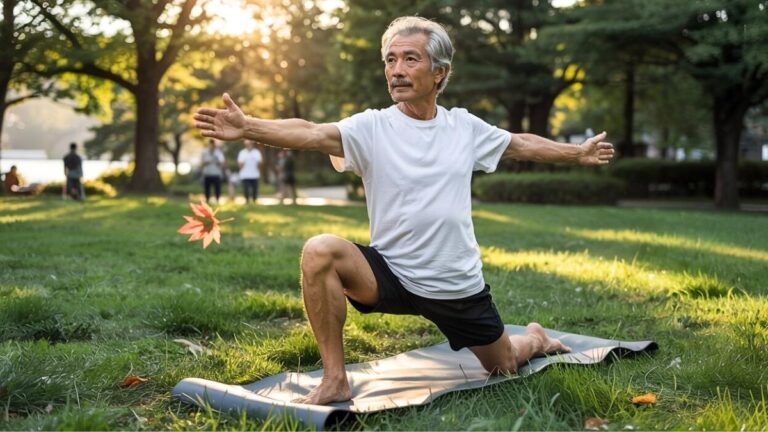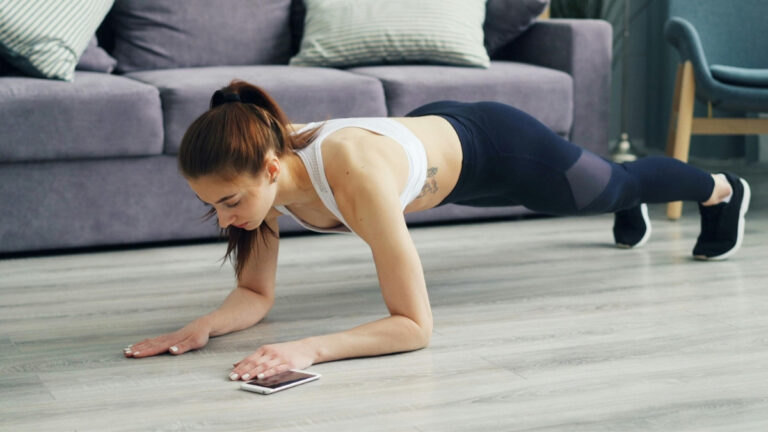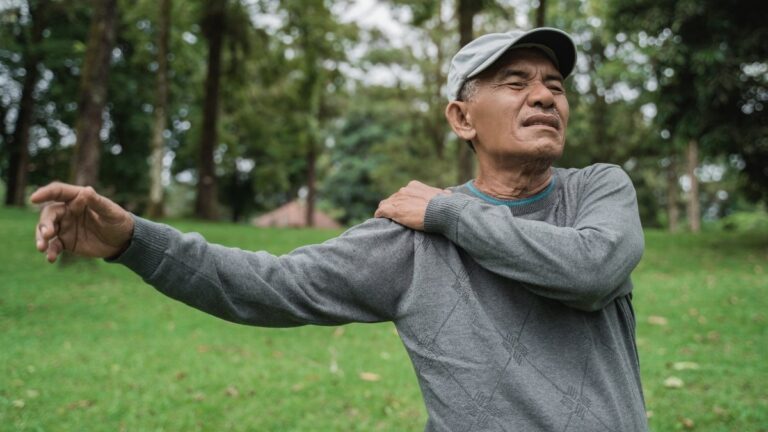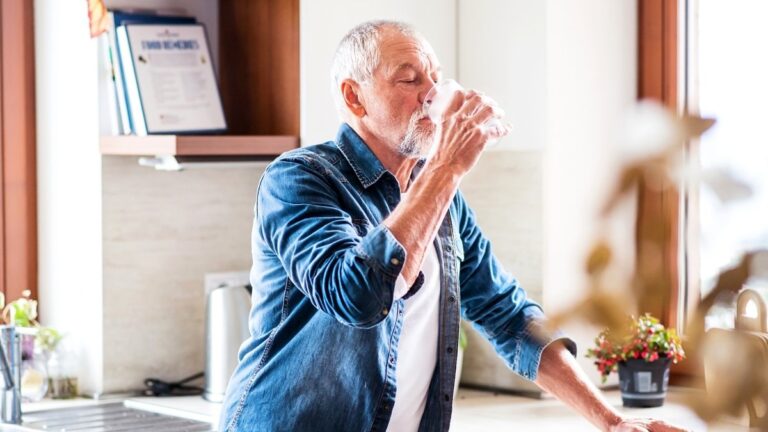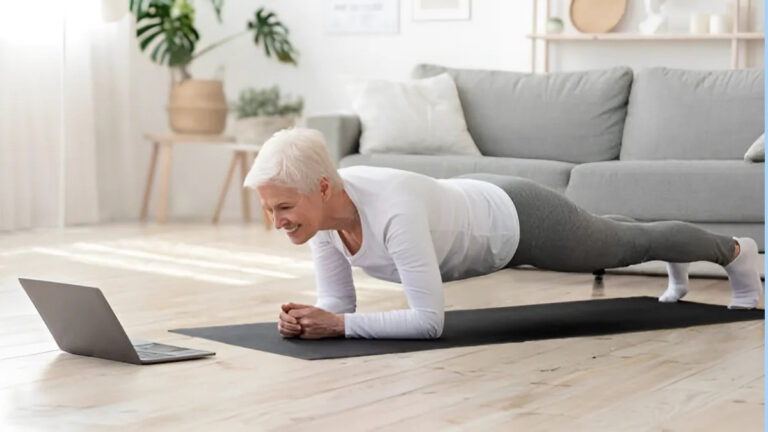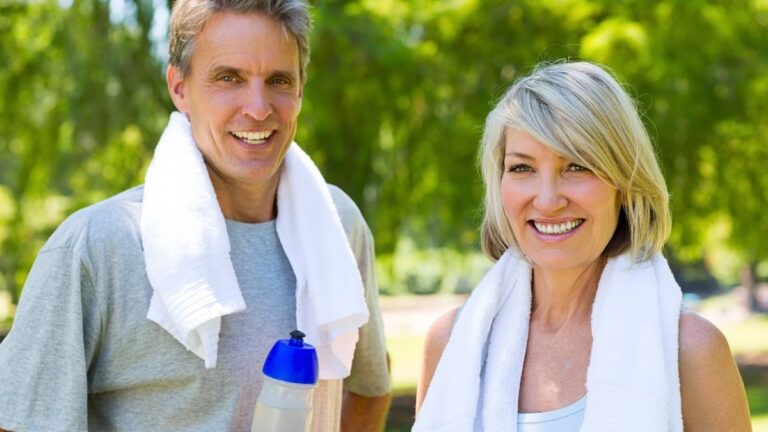Seniors Are Raving About This Mobility Exercise That Feels Like Magic
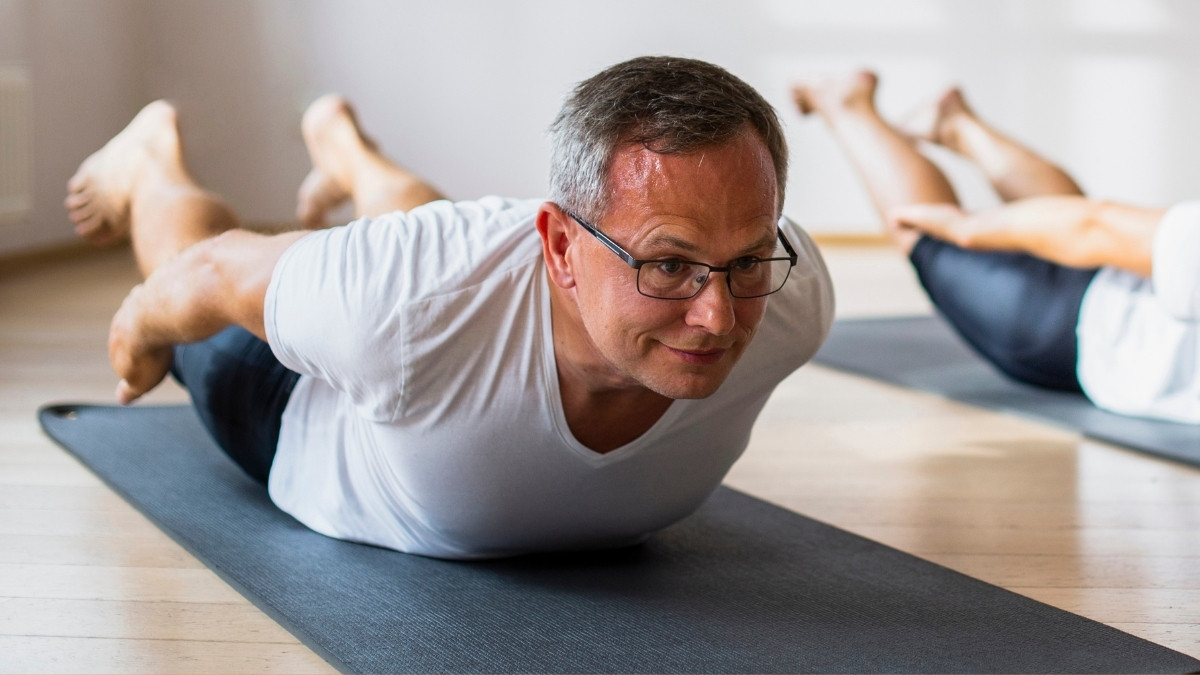
That deep, unshakeable stiffness in your hips and back—the one you have likely been told is just a “normal” part of aging—is not something you have to live with. For millions of seniors, daily life is a navigation of chronic aches, joint pain, and a persistent, low-level fear of a fall that can limit independence.
You may have tried traditional stretching, basic yoga, or physical therapy, only to find the relief is temporary, or in some cases, the exercises themselves are painful.
But what if the solution was not about forcefully stretching that tight muscle, but about retraining your brain? Across the internet and in wellness communities, seniors are raving about a “magic” mobility practice that does just that.
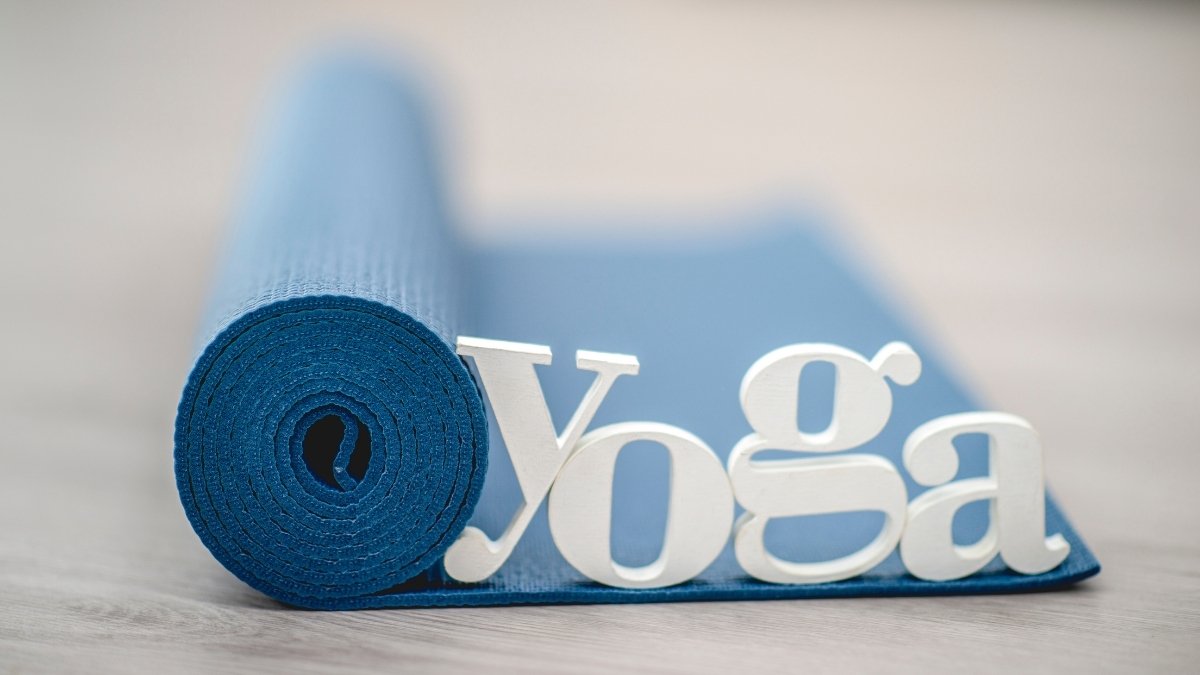
This “magic” is a practice known as Somatic Movement. This article will explain what somatic exercises are, the simple neuroscience behind why they work when stretching fails, and how you can use a 5-minute daily routine to unlock years of tension, relieve pain, and move with newfound confidence.
What Are Somatic Exercises for Seniors? The “Magic” Explained

The term “somatic” comes from the Greek word soma, which means “the living body” as experienced from within. Unlike traditional exercise that focuses on repetitions, speed, or external goals (like lifting a certain weight), somatic exercises are slow, mindful, internal movements. They are designed to reconnect your mind to your body’s physical sensations.
The benefits are not just anecdotal; they are a direct response to the most significant health challenges facing older adults.
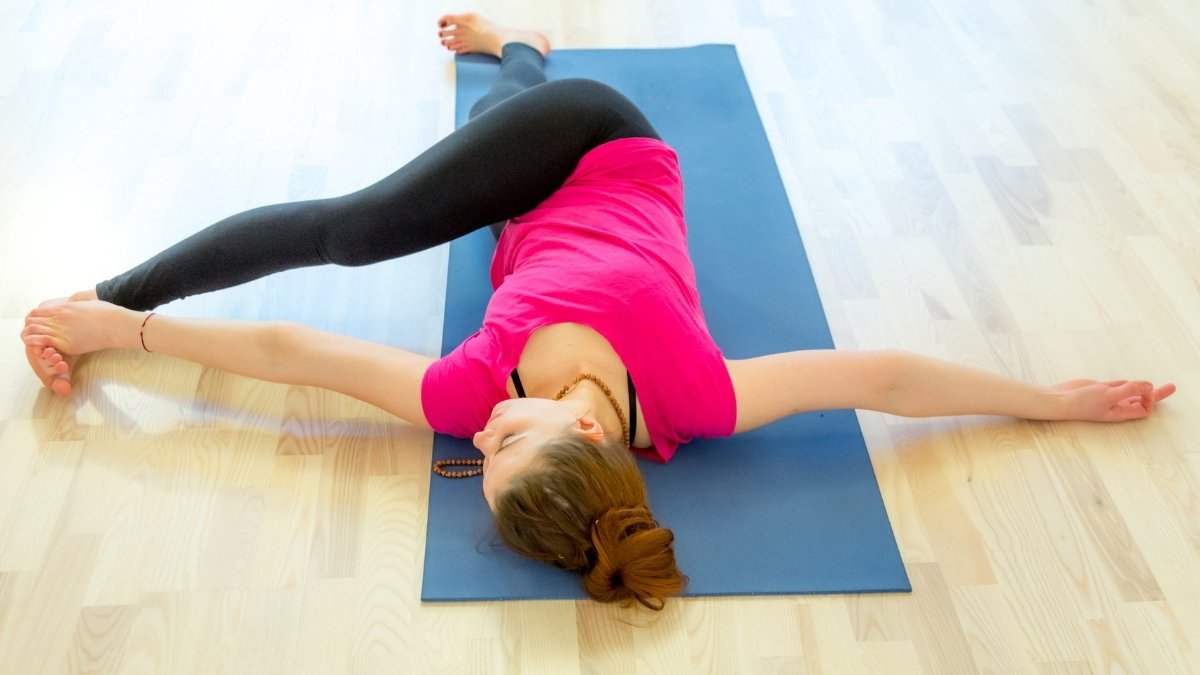
- Relieves Chronic Pain: The primary challenge for 36% of adults 65 and older is chronic pain , while 70% of those aged 50-80 report current joint pain. Somatic exercises are highly effective at easing this discomfort, especially in the back, neck, and hips.
- Improves Balance & Prevents Falls: More than 1 in 4 Americans aged 65 and older fall each year, making falls the leading cause of fatal and nonfatal injuries in this group. Somatic practices like the Feldenkrais Method are scientifically proven to improve balance, gait speed, and coordination, which directly reduces fall risk.
- Boosts Flexibility & Joint Mobility: For the nearly 54% of adults 75 and older with arthritis , somatic movement helps “hydrate” joints and restore a pain-free range of motion, easing stiffness.
- Calms Stress & Anxiety: The slow, mindful, and gentle nature of these movements activates the body’s parasympathetic nervous system—the “rest and digest” state—which lowers stress hormones and anxiety.
Traditional Stretching vs Somatic Pandiculation
Understanding Two Different Approaches to Muscle Release
Key Insights
- Muscle is in relaxed state
- External force applied to lengthen
- Stretch reflex may activate
- Temporary lengthening achieved
- Muscle returns to habitual state
- Gentle voluntary contraction
- Conscious awareness maintained
- Slow, controlled release phase
- Brain learns new motor pattern
- Lasting release and control
The Fundamental Differences
Your 5-Minute Daily Somatic Routine for Mobility & Pain Relief
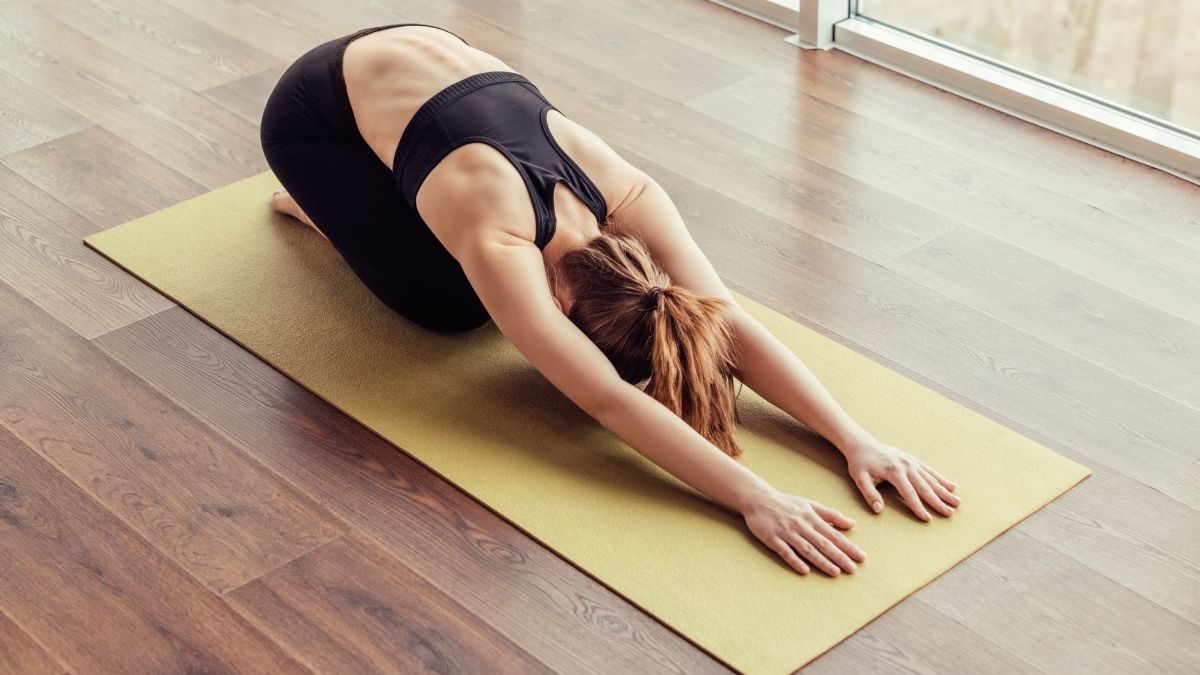
This is the actionable core of the practice. Find a quiet space where you can focus. These movements can be done on a mat, on your carpet, or even in your bed. The only rules are to move slowly, focus on the sensation, and never push into pain. Smaller, more mindful movements are better than large, forceful ones.
1. The Pelvic Shift (Seated or Lying)
- Why It’s “Magic”: This move targets the “epicenter” of Sensory Motor Amnesia: the low back and hips. It gently re-educates the muscles that control your core and posture.
- Step-by-Step (Floor/Bed):
- Lie on your back with your knees bent and feet flat on the floor, hip-width apart.
- As you inhale, gently arch your lower back, creating a small space between your back and the floor. Imagine your pelvis is a bowl tipping water out toward your feet.
- As you exhale, slowly flatten your low back against the floor, engaging your belly. Imagine tipping the bowl of water toward your chin.
- Repeat 5-10 times, moving as slowly as possible.
- Safe Chair Modification:
- Sit tall in a sturdy chair, with both feet flat on the floor. Place your hands on your knees.
- Inhale and rock your pelvis forward, arching your back and lifting your chest. Feel your “sits bones” rock to the back of the chair.
- Exhale and slowly rock your pelvis backward, rounding your spine and dropping your chin. Feel your “sits bones” rock forward.
- Repeat 5-10 times.
2. The Side-to-Side (Waist Hike)
- Why It’s “Magic”: This move releases “hidden” tension in the QL and side-body muscles, which get tight from imbalanced sitting or standing and can contribute to back pain.

- Step-by-Step (Floor/Bed):
- Lie on your back, knees bent and feet flat.
- Slowly and gently, hike your right hip up toward your right shoulder. This is a tiny, internal movement—you are shortening (contracting) your right waist. Your hip should not lift off the floor.
- Slowly release the contraction and return your hip to a neutral position.
- Repeat 3-5 times on the right, then 3-5 times on the left.
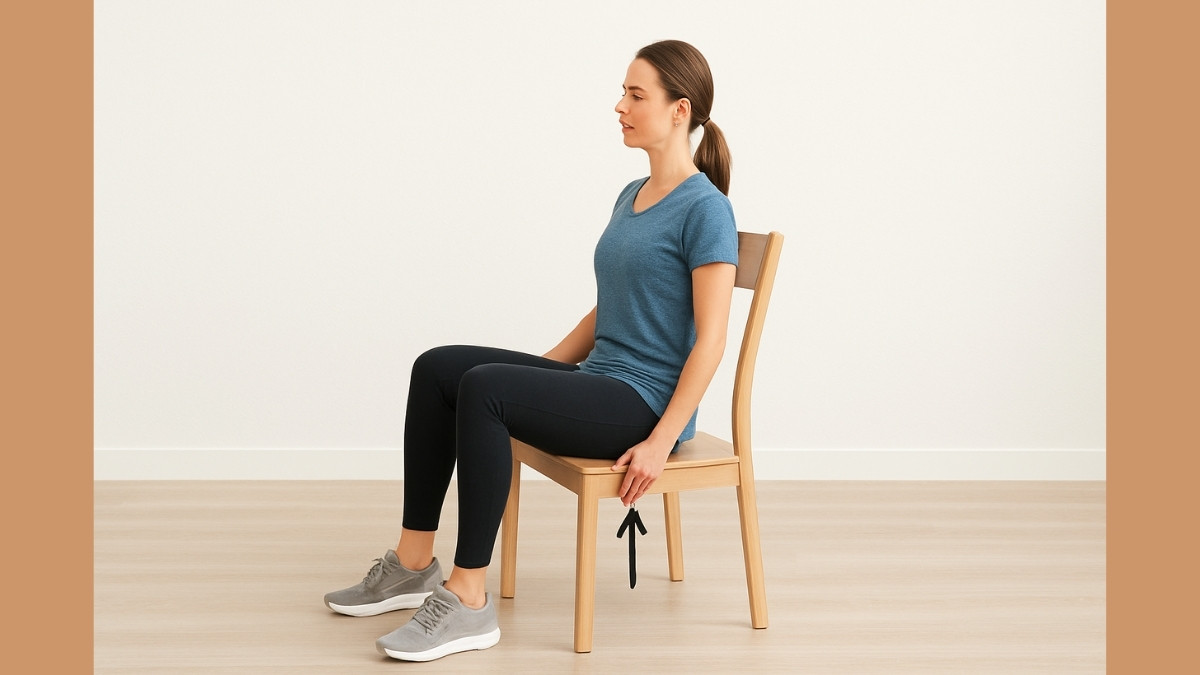
- Safe Chair Modification:
- Sit tall in your chair, feet flat.
- Slowly hike your right hip up toward your right shoulder, feeling your right “sit-bone” become light or lift slightly.
- Slowly release and settle your weight back into the chair.
- Repeat 3-5 times on the right, then 3-5 times on the left.
3. The Gentle Spinal Twist

- Why It’s “Magic”: This hydrates the discs of the spine and safely improves thoracic (mid-back) mobility, which is crucial for good posture and deep breathing.
- Step-by-Step (Floor/Bed):
- Lie on your back, knees bent, and feet flat. Place your arms out to your sides in a “T” shape.
- As you exhale, slowly let both knees drift just a few inches to the right. Do not go to your full range of motion.
- Gently turn your head to the left. Take a breath and focus on the sensation of release.
- Slowly bring your head and knees back to the center.
- Repeat on the left side. Go back and forth 3-4 times per side.
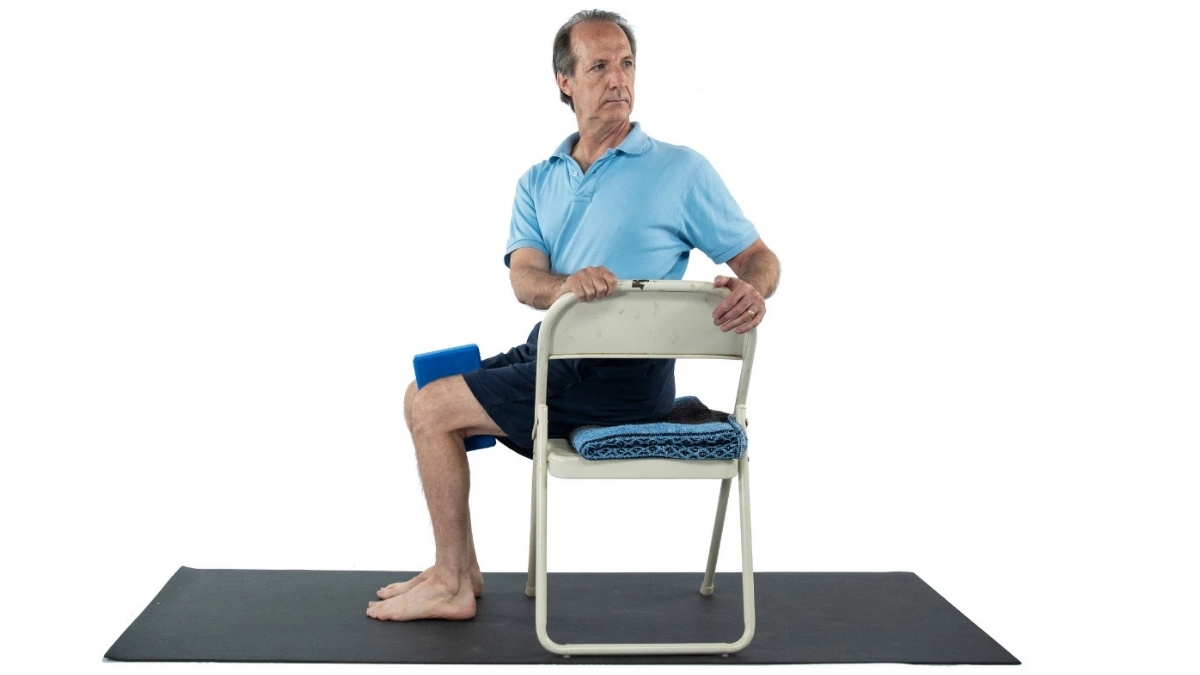
- Safe Chair Modification:
- Sit tall in your chair.
- Place your left hand on your right knee and your right hand on the side of the chair.
- Inhale to sit tall. Exhale and gently twist to the right, leading with your chest, not by pulling with your arm.
- Hold for a breath, then slowly return to center.
- Repeat on the left side.
The 5-Minute “Magic” Mobility Routine
🧘 Gentle Movement Guide for SMA
Evidence-based exercises designed to release tension, improve mobility, and calm the nervous system
The Pelvic Shift
Low Back & Hips
“Unlocks” a stiff low back and hips held tight by SMA
Floor/Bed Version
- 1 Lie on back with knees bent
- 2 Inhale and gently arch low back
- 3 Exhale and slowly press back flat
Chair Modification
- 1 Sit tall in a chair
- 2 Inhale and rock pelvis forward (arch)
- 3 Exhale and rock pelvis back (round)
The Side-to-Side
Side Body & Waist
Releases “hidden” tension in the side-body that twists the spine
Floor/Bed Version
- 1 Lie on back with knees bent
- 2 Gently hike right hip toward right shoulder
- 3 Slowly release
- 4 Repeat on left side
Chair Modification
- 1 Sit tall
- 2 Gently “hike” right hip up (like lifting one sit-bone)
- 3 Slowly release
- 4 Repeat on left side
Gentle Spinal Twist
Mid-Back & Posture
Hydrates the spine and improves posture and breathing
Floor/Bed Version
- 1 Lie on back with knees bent
- 2 Slowly let knees drift 2-3 inches to the right
- 3 Breathe, then slowly return to center
- 4 Repeat on left side
Chair Modification
- 1 Sit tall
- 2 Place left hand on right knee
- 3 Gently twist to the right, leading with the sensation
- 4 Slowly return to center
- 5 Repeat on left side
The “Voo” Breath
Nervous System
Instantly calms the “fight or flight” stress response
How to Practice
- 1 Sit or lie comfortably
- 2 Inhale slowly through the nose
- 3 Exhale making a low, vibrating “VOO” sound
Chair Version
- 1 Sit tall in your chair
- 2 Inhale deeply through your nose
- 3 Exhale with the “VOO” sound, feeling vibration in gut
Safety & Modifications: How to Start Somatic Exercises Safely
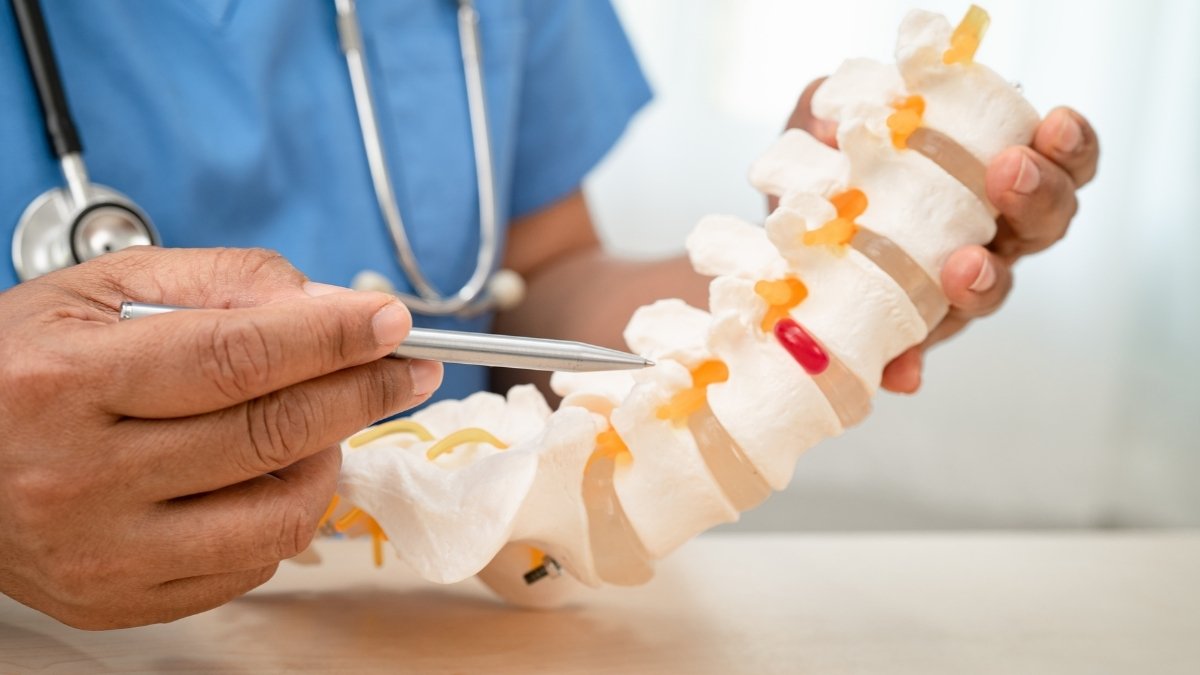
The primary rule of somatic movement is to listen to your body. The goal is awareness, not achievement. If you feel any sharp pain, stop immediately or make the movement much smaller.
If You Have Limited Mobility…
These exercises are ideal for you. All the movements in this guide can be done safely and effectively while seated in a sturdy chair. You can also do them in bed before you even get up in the morning, which is a powerful way to “wake up” the brain-body connection.
If You Have Osteoporosis…
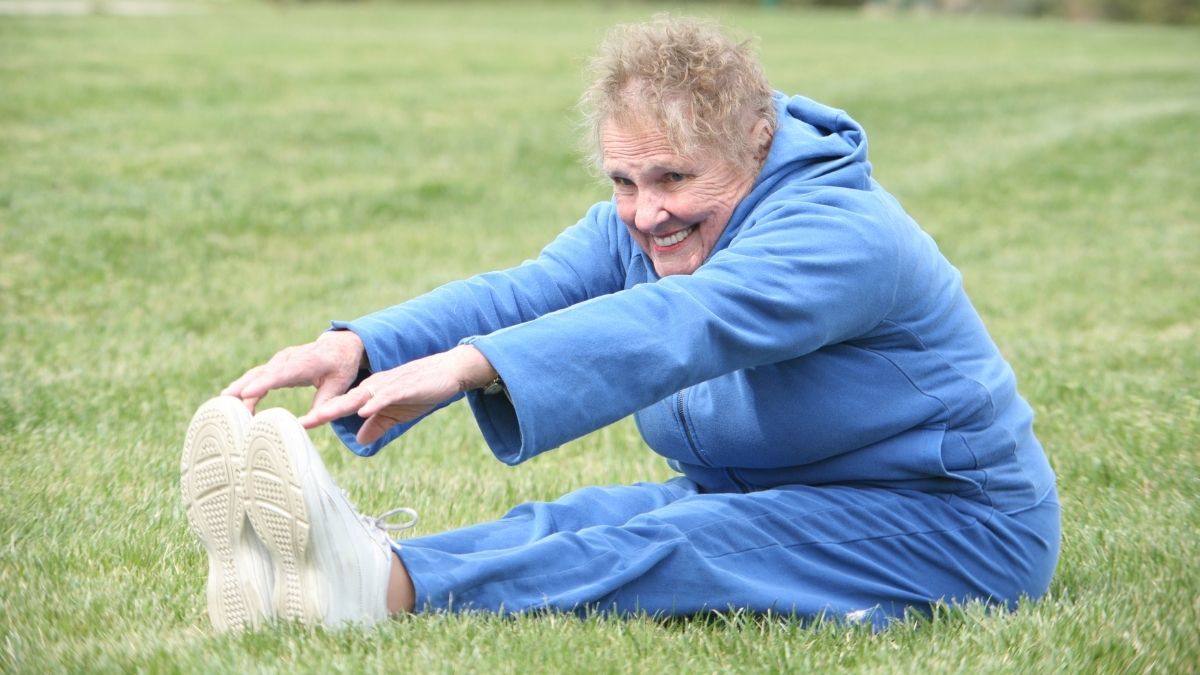
This is a critical safety consideration. High-impact exercises (like jumping) and movements that involve forceful forward bending (like sit-ups or toe-touches) or deep twisting are contraindicated for osteoporosis, as they can increase fracture risk.
Somatic exercises are an ideal alternative because they are, by definition, slow, controlled, and non-ballistic. Mind-body exercises have been shown to have “encouraging effects” for seniors with osteoporosis, helping to reduce pain and improve quality of life.
Your guideline:
- For the Pelvic Shift, focus only on the gentle rocking motion. Do not turn it into a full “crunch” or “sit-up.”
- For the Spinal Twist, let your knees move only a tiny amount, just enough to feel the sensation of release. Do not force a deep twist.
“It Gave Me My Life Back”: Real Stories of Somatic Healing
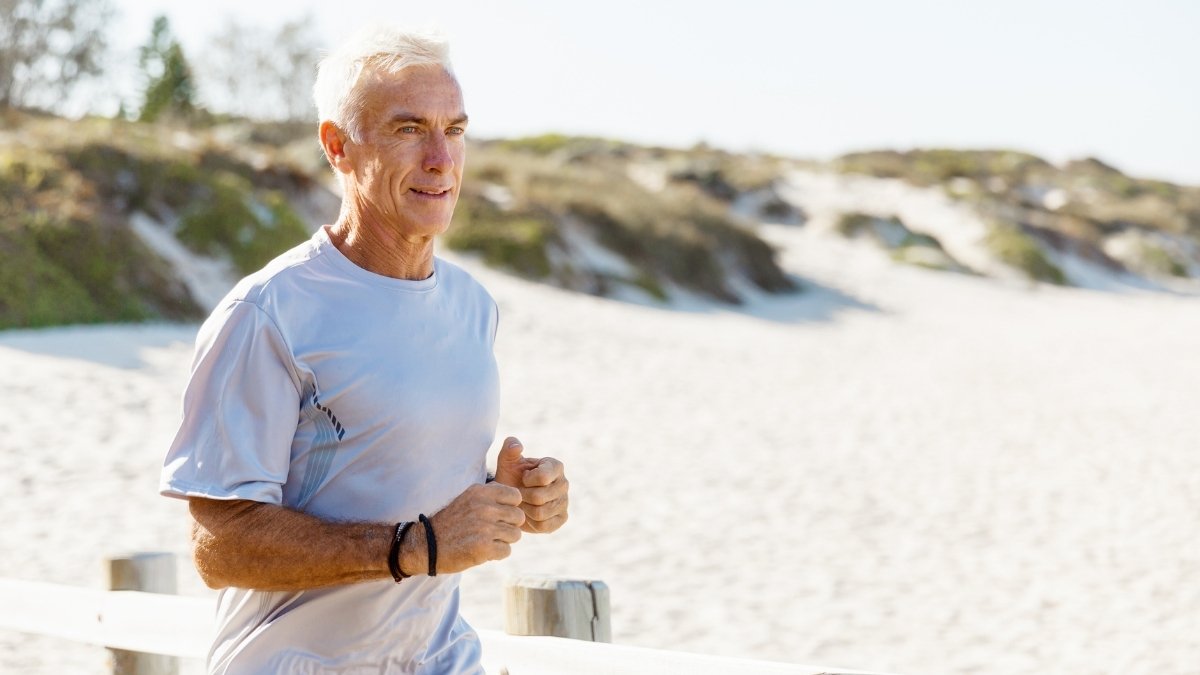
The science is promising, but the real-life stories from seniors who have discovered somatics are what truly demonstrate its “magic.”
Michèle, age 75, suffered from chronic pain all over her body since she was 8 years old. After trying countless other methods, she called the somatic guidance “outstanding” and said, “I will be eternally grateful”.
Your Journey to Better Mobility Begins Now
The “magic” that seniors are raving about is not magic at all—it is neuroscience. It is the simple, profound act of re-educating your nervous system and re-establishing the mind-body connection that may have been lost over time.
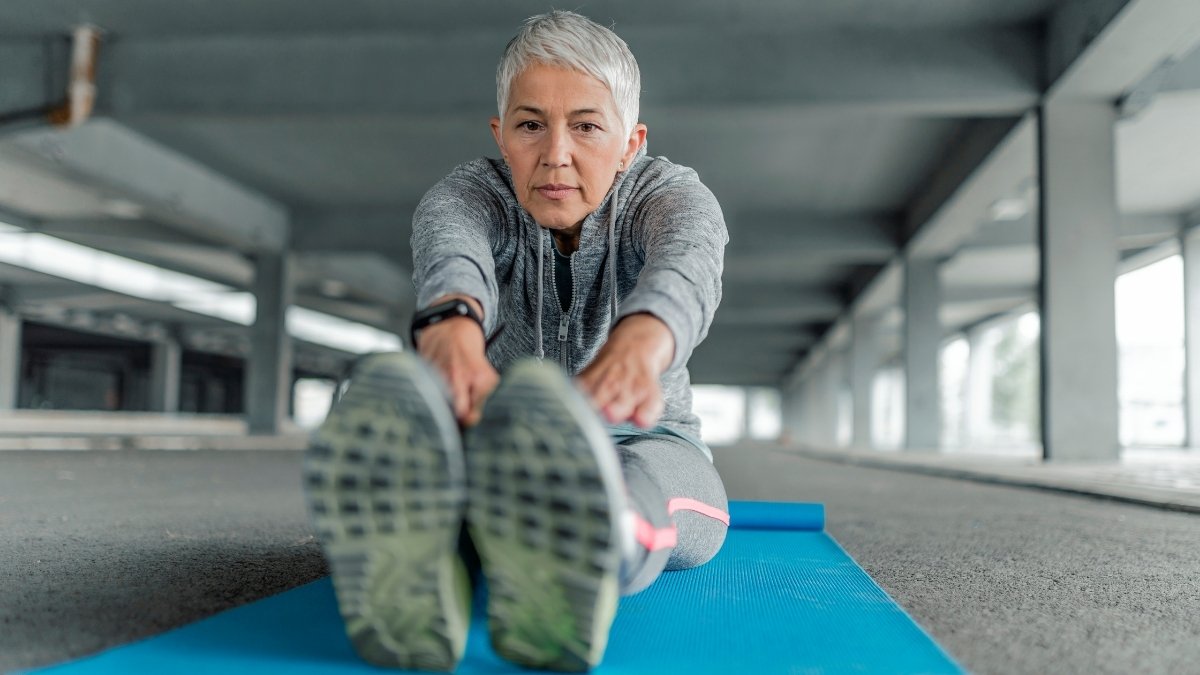
By trading forceful stretching for mindful pandiculation, you can “reboot” your brain-muscle connection, release the Sensory Motor Amnesia that holds you tight, and finally find lasting relief from chronic stiffness and pain.
Do not just live with the stiffness. Try the “Pelvic Shift” (Move 1) in your chair right now. Move slowly, breathe, and just feel the connection. Your body already knows how to do this—you are just reminding it how.

